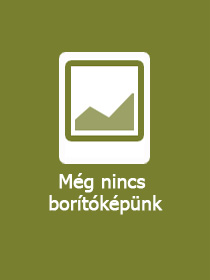
A termék adatai:
| ISBN13: | 9789633869062 |
| ISBN10: | 9633869064 |
| Kötéstípus: | Puhakötés |
| Terjedelem: | 176 oldal |
| Méret: | 198x142 mm |
| Nyelv: | angol |
| Illusztrációk: | 28 color illus. Illustrations, color |
| 700 |
Témakör:
Dürer's Coat
Renaissance Men and Material Cultures of Social Recognition
Sorozatcím:
The Natalie Zemon Davis Memorial Lectures Series;
Kiadó: Central European University Press
Megjelenés dátuma: 2025. április 15.
Normál ár:
Kiadói listaár:
GBP 18.99
GBP 18.99
Az Ön ára:
8 842 (8 421 Ft + 5% áfa )
Kedvezmény(ek): 8% (kb. 769 Ft)
A kedvezmény csak az 'Értesítés a kedvenc témákról' hírlevelünk címzettjeinek rendeléseire érvényes.
Kattintson ide a feliratkozáshoz
Kattintson ide a feliratkozáshoz
Beszerezhetőség:
Még nem jelent meg, de rendelhető. A megjelenéstől számított néhány héten belül megérkezik.
Hosszú leírás:
During the Renaissance, clothing became more and more elaborately decorated and expensive. It often emphasised the privilege of the male elite. Yet clothing could also subvert or reshape conventional cultural norms. This book draws on the case of Albrecht Dürer to examine Renaissance male outerwear as a key element of signalling communication in everyday life. The recognised artist fought for the esteem of urban creators. In asserting his dignity and taste, outerwear was particularly important to Dürer and his time. Ulinka Rublack argues that cloaks and gowns gained in importance during this period and were among the things that mediated social relationships for centuries to come. An investigation into outerwear opens a new window into how people and things were connected in the Renaissance and how important clothing was in shaping subjectivities in everyday life.
Using the example of Dürer and his wife as emerging social types, the study follows the artist and the men and women of his time through the streets of Venice, Nuremberg, Augsburg and Antwerp. It poses pressing questions about Albrecht Dürer's entanglement in unequal networks of global trade and the German Renaissance Atlantic.
Using the example of Dürer and his wife as emerging social types, the study follows the artist and the men and women of his time through the streets of Venice, Nuremberg, Augsburg and Antwerp. It poses pressing questions about Albrecht Dürer's entanglement in unequal networks of global trade and the German Renaissance Atlantic.
Tartalomjegyzék:
List of Illustrations
Preface and Acknowledgments
Chapter 1. Albrecht Dürer?s Material Renaissance
Chapter 2. Cloaks that Talk
Chapter 3. Painting Fur and the Analysis of Style
Epilogue
Notes
Index
Preface and Acknowledgments
Chapter 1. Albrecht Dürer?s Material Renaissance
Chapter 2. Cloaks that Talk
Chapter 3. Painting Fur and the Analysis of Style
Epilogue
Notes
Index





